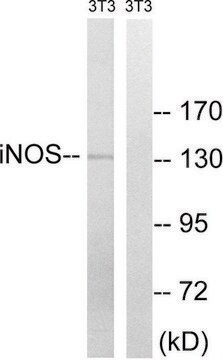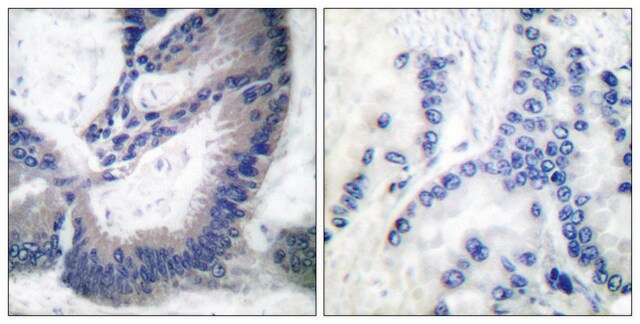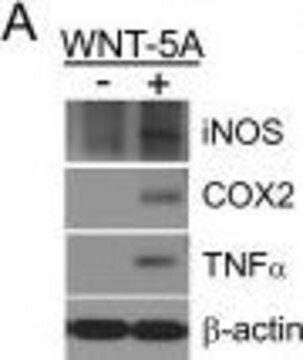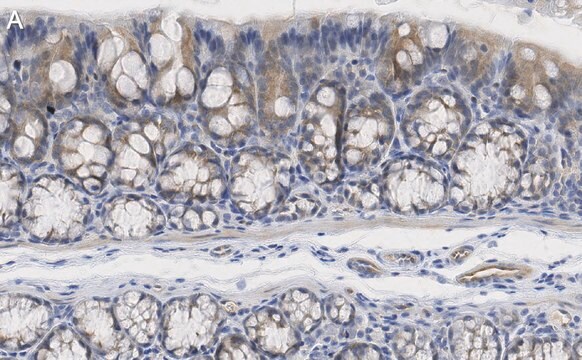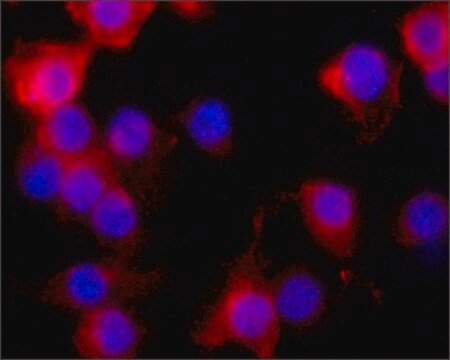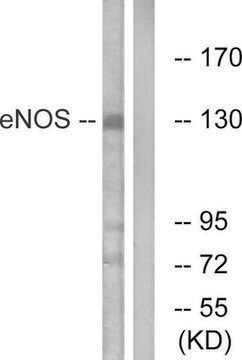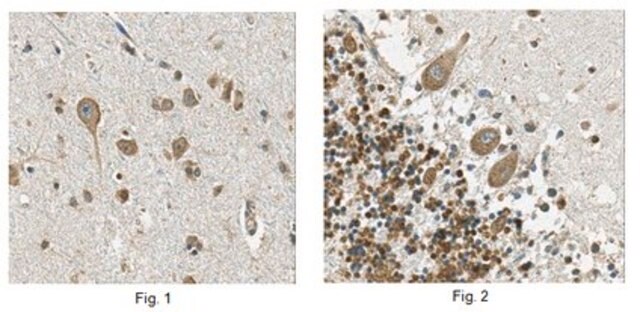SAB4200766
Anti-Nitric Oxide Synthase, Inducible antibody, Mouse monoclonal
clone NOS-IN, purified from hybridoma cell culture
Sinónimos:
Anti-Hepatocyte NOS (HEP-NOS), Anti-Inducible NOS (iNOS), Anti-NOS type II, Anti-Peptidyl-cysteine S-nitrosylase NOS2
About This Item
Productos recomendados
biological source
mouse
Quality Level
antibody form
purified from hybridoma cell culture
antibody product type
primary antibodies
clone
NOS-IN, monoclonal
form
buffered aqueous solution
mol wt
~130 kDa
species reactivity
human, mouse, rat, plant
concentration
~1.0 mg/mL
technique(s)
flow cytometry: suitable
immunoblotting: 2-4 μg/mL using mouse macrophage RAW 264.7 cell line activated with lipopolysaccharide (LPS) and interferon-γ
immunohistochemistry: 10-20 μg/mL using heat-retrieved formalin-fixed, paraffin-embedded human pancreas sections
isotype
IgG1
UniProt accession no.
shipped in
dry ice
storage temp.
−20°C
target post-translational modification
unmodified
Gene Information
mouse ... Nos2(18126)
General description
Specificity
Immunogen
Application
- immunoblotting
- immunofluorescence
- immunohistochemistry
- fluorescence-activated cell sorting (FACS)
Biochem/physiol Actions
Physical form
Storage and Stability
Disclaimer
¿No encuentra el producto adecuado?
Pruebe nuestro Herramienta de selección de productos.
Storage Class
10 - Combustible liquids
flash_point_f
Not applicable
flash_point_c
Not applicable
Certificados de análisis (COA)
Busque Certificados de análisis (COA) introduciendo el número de lote del producto. Los números de lote se encuentran en la etiqueta del producto después de las palabras «Lot» o «Batch»
¿Ya tiene este producto?
Encuentre la documentación para los productos que ha comprado recientemente en la Biblioteca de documentos.
Nuestro equipo de científicos tiene experiencia en todas las áreas de investigación: Ciencias de la vida, Ciencia de los materiales, Síntesis química, Cromatografía, Analítica y muchas otras.
Póngase en contacto con el Servicio técnico